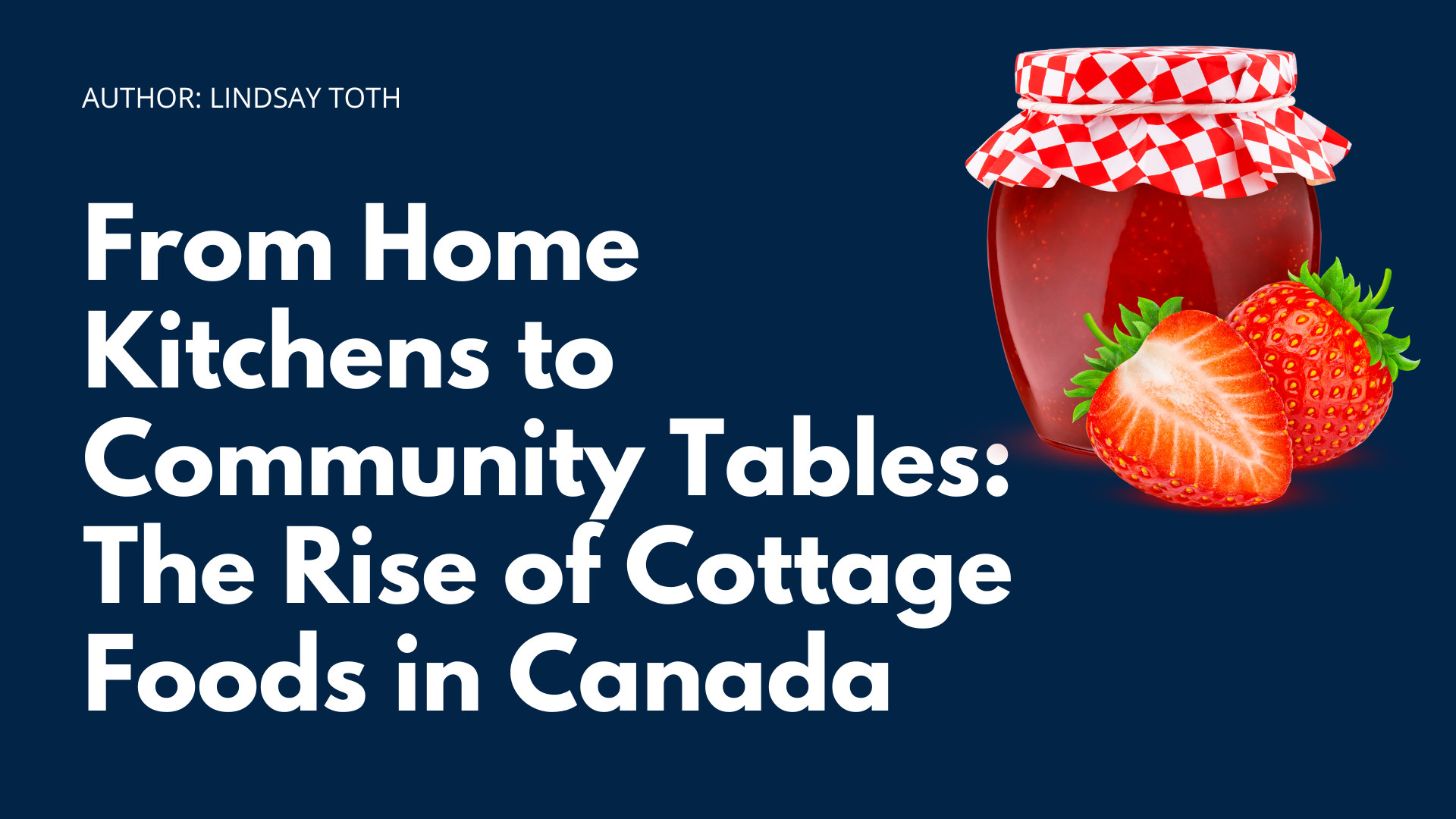From Home Kitchens to Community Tables: The Rise of Cottage Foods in Canada
By: Lindsay Toth
In communities across Canada, the kitchen is more than a place to prepare meals. It is a hub of culture, tradition, and innovation. Increasingly, home kitchens are becoming the starting point for small-scale food businesses, known as cottage food enterprises. These businesses offer economic opportunities while reconnecting people to cultural heritage, traditions, and community.
Cottage food businesses allow individuals to produce and sell food from their homes, creating new ways to share stories, flavors, and skills. From baked goods and preserves to dry mixes, these small enterprises strengthen local food systems and help communities reclaim control over what they eat. For many, the rise of cottage foods is a way to preserve culinary traditions while building sustainable livelihoods.
Understanding Cottage Food Laws in Canada
The rules for cottage food businesses vary across provinces and territories. In general, low-risk foods such as baked goods, jams, and dry mixes can be produced and sold from home kitchens, but specific regulations differ:
In Ontario, home-based producers can sell certain foods at farmers’ markets and other approved venues, provided they follow public health regulations and obtain the required permits or licenses.
Alberta allows low-risk home-prepared foods to be sold directly to consumers with proper registration and compliance with food handling guidelines.
British Columbia’s Home-Based Craft Food Act permits individuals to sell certain foods from home kitchens without a commercial kitchen license, supporting local food entrepreneurship.
While these laws enable cottage food businesses to operate, they also emphasize safe food handling to protect consumers and maintain trust in the local food system.
Lessons from the United States
Canadians can also look to U.S. cottage food laws for guidance. Many states have created frameworks that recognize low-risk foods as safe for home-based production:
Minnesota’s 2015 law has supported over 8,900 small businesses by allowing individuals to sell shelf-stable foods after completing a food-safety course.
Texas’ Food Freedom Act expands the range of permissible foods, allows limited wholesale sales, and raises the annual sales cap, creating opportunities for growth and innovation.
These examples show that with clear, practical regulations, home-based food businesses can thrive, support local economies, and preserve cultural food traditions.
Challenges and Opportunities in Canada
The cottage food model comes with challenges. Variations in regulations across provinces can create confusion for entrepreneurs looking to expand. Access to funding, commercial-grade equipment, and distribution networks can be limited, especially in rural and remote areas. Despite these barriers, cottage foods offer significant opportunities, particularly for Indigenous women:
Revitalizing Traditional Food Practices: Producing and sharing ancestral foods educates communities and preserves culinary heritage.
Promoting Food Sovereignty: Local production strengthens community resilience and reduces reliance on external food sources.
Creating Economic Opportunities: These businesses generate income, support employment, and stimulate local economies.
Cottage food enterprises are not just about small-scale production. They are a pathway to cultural revitalization, economic empowerment, and stronger community connections. For Indigenous women, these businesses provide a way to reconnect with ancestral food practices, share heritage with others, and contribute to broader movements for food sovereignty.
In the next post, we will explore women using cottage food businesses to foster community resilience and promote sustainable food systems across Canada.






